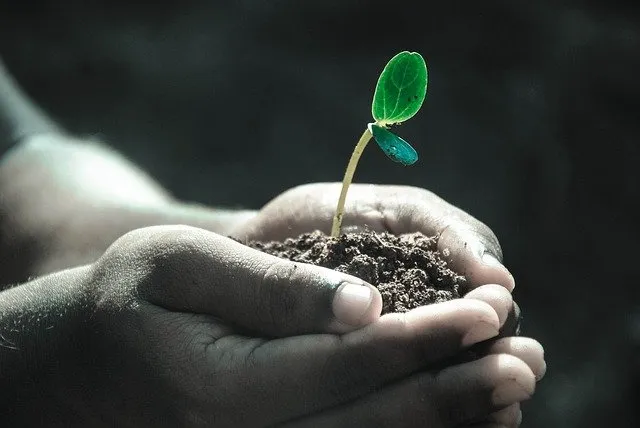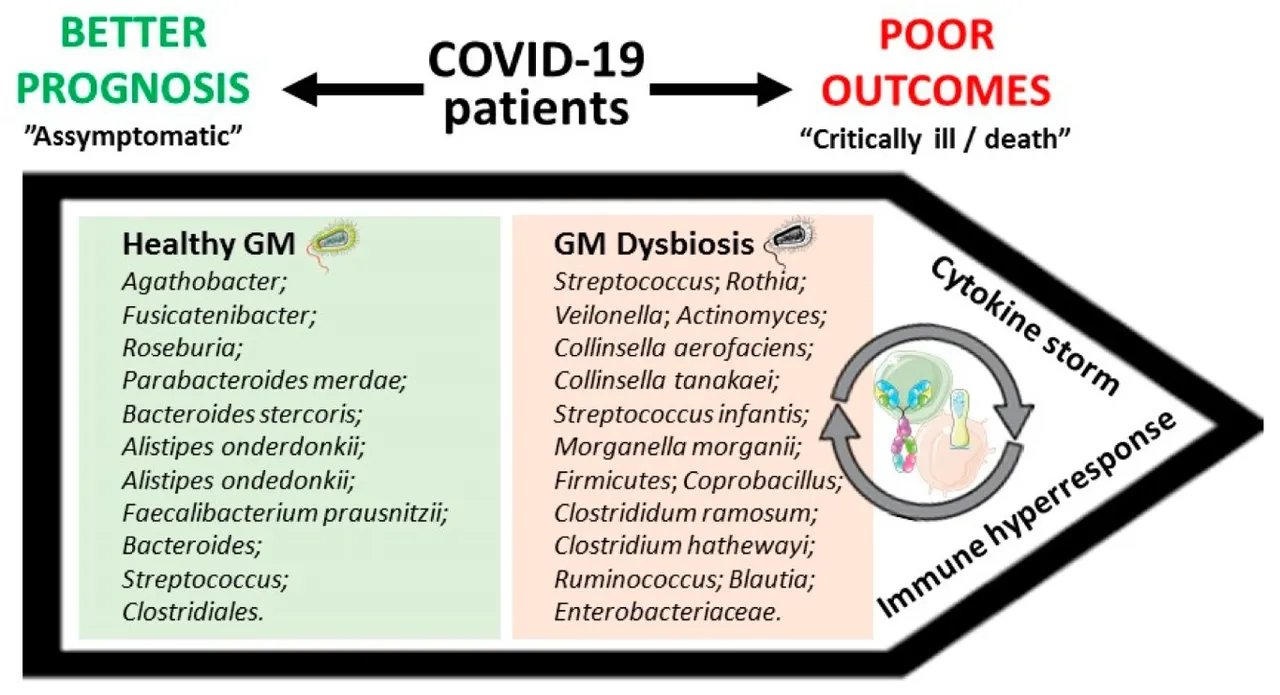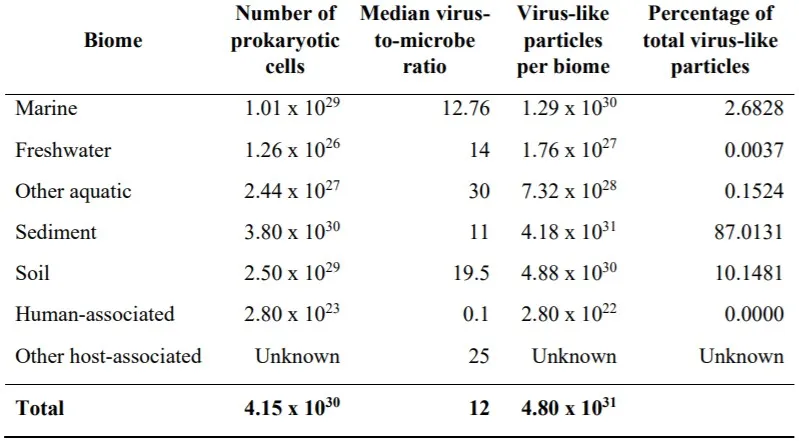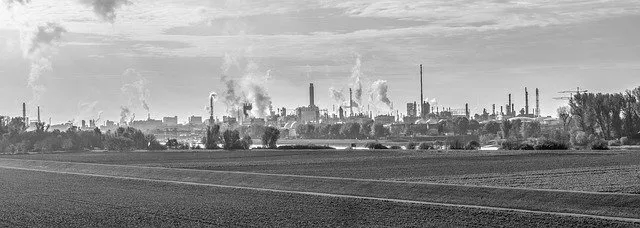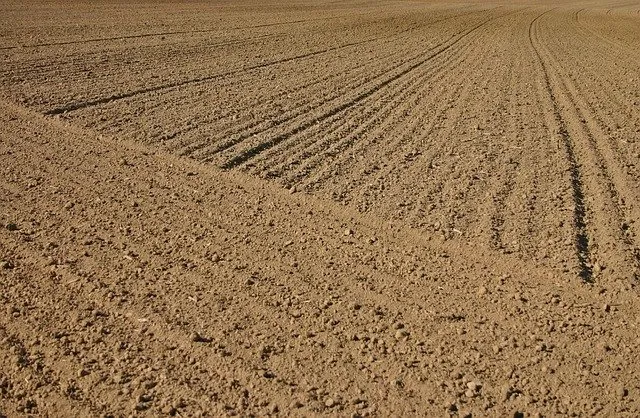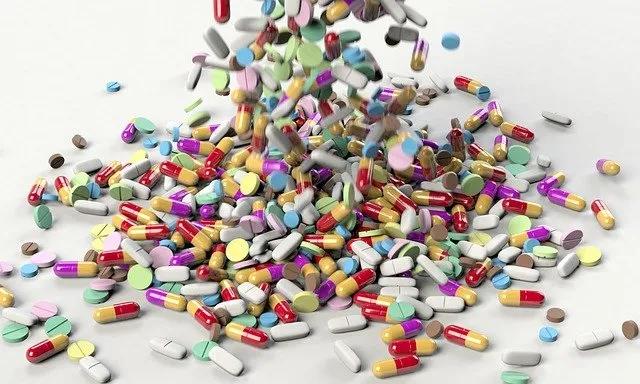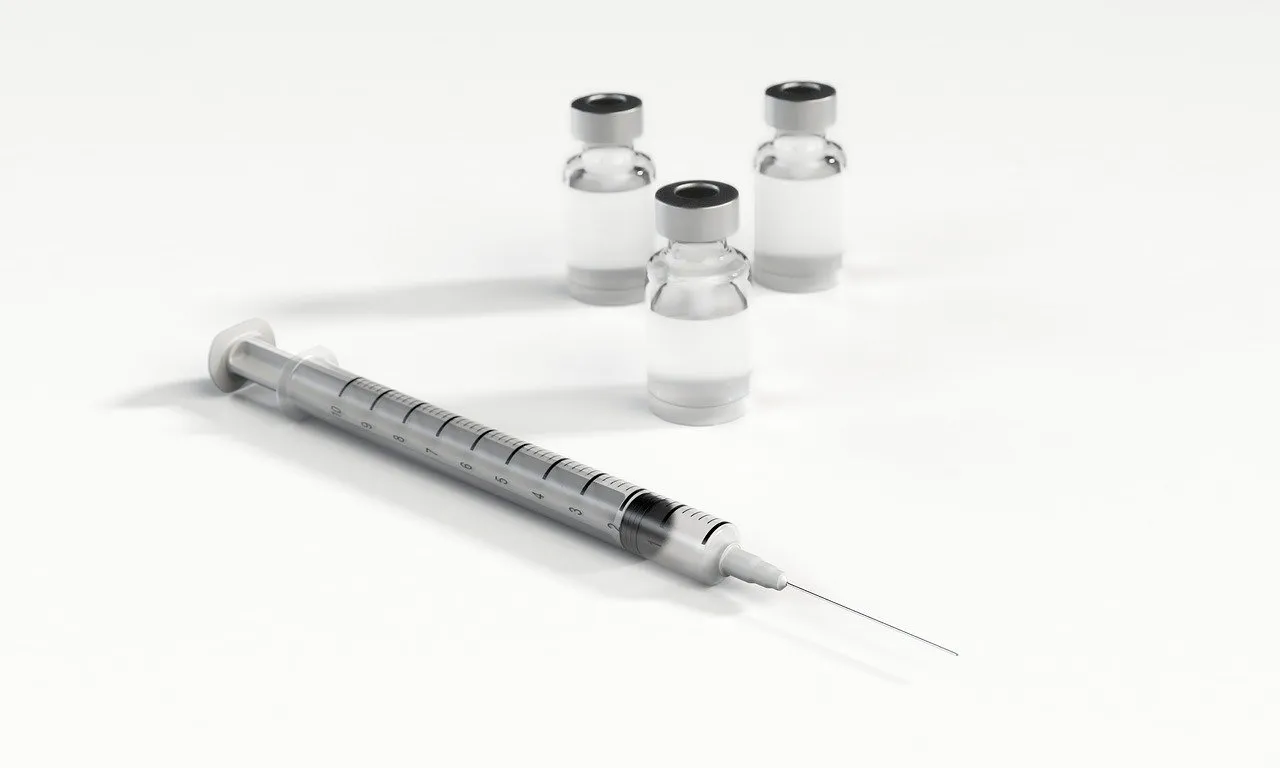
This is not going to be a post about all the possible side effects of the experimental COVID-19 vaccines. Instead it will focus on the role of viruses more broadly within an ecosystem. It will also discuss why the approach taken during the COVID-19 pandemic is based on an outdated understanding of what a virus is and its function.
Science relating to viruses and the virome is radically changing but most of it has not filtered down to physicians, scientists, clinicians and especially policy makers. Standard practice in the medical world is to attack viruses even though this view is increasingly unsupported. Genomic sequencing of nature tells us that humans are not at the centre of biology like we thought. Instead, we are the result of biology―particularly viruses―which means coming into homeostasis with them (Bush, 2020a).
Everything in nature is connected
To understand viruses, we first have to remember that humans are not separate from nature. Our food comes from the Earth. Our bodies come from the Earth and nature reclaims them after we transition. We rely on the sun, air and water to survive. We are part of nature's system.
All animals and plants on this planet share the same DNA, which is a four-letter code that specifies which amino acid is needed at each step to make a protein (Hewitson, nd), (NIH, nd). We also know that carefully balanced communities of microorganisms, called microbiomes, are crucial for the health of all people, animals and the planet itself (Finbow, 2019).
The microbiome is the key to health
Microbiomes are made up of living microbes (i.e., archaea, bacteria, protozoa and fungi) that are both helpful and potentially harmful. Viruses are the communication network (Bush, 2020a), (Bush, 2020c). Technically, a virus does not fit the definition of a living organism since it cannot reproduce on its own, does not produce energy, and has no metabolism (Bush, 2020b).
In the natural environment, a healthy soil microbiome supports crops and wildlife, while healthy river and ocean microbiomes feed and support many species (Finbow, 2019). Research from the past ten years shows that every condition on the planet is linked to the microbiome, so what grows a healthy plant is what grows a healthy human. The microbiome is literally where all the nutrients, cell fuel production and cell communication between species occurs (Bush, 2020a).
More and more studies are showing that the microbiome is critical for human health (Robinson & Pfeiffer, 2014), (Teixeira Lima et al., 2019), (Wang et al., 2017). The microbiota not only competes with pathogens for colonisation sites and resources, it supplies important signals for immune priming and a healthy immune system (Robinson & Pfeiffer, 2014).
Trillions of microbes have evolved with and continue to live on and within humans. The human body contains at least 1 000 different species of known bacteria and carries 150 times more microbial genes than are found in the entire human genome (Wang et al., 2017). In fact, human cells are outnumbered 10-fold by bacteria and 100-fold by viruses (Mokili et al., 2012).
Compared to the bacterial component of the microbiome, the viral component, called the virome, has been much less studied (Robinson & Pfeiffer, 2014), (Wang, 2020). However, as we learn more about the virome, we are realising that our previous understanding of viruses is outdated. Research is starting to show that if we continue to attack the very things that built us, we will engineer our own extinction (Bush, 2020b).
Because the science in this area is so new, microbiota-viral interactions are not yet well understood despite the commonality of respiratory viral infections (Groves et al., 2020). Even just a few years ago, the lungs were considered sterile. However, studies now show that lungs have their own microbiome and are under influence other microbiomes such as the intestines (Baghbani et al., 2020).
Potential microbiota-viral interactions
Recent research confirms that influenza and coronaviruses—namely severe acute respiratory syndrome coronavirus (SARS-CoV), SARS-CoV-2 and Middle East respiratory syndrome coronavirus (MERS-CoV)—are associated with gut microbiota imbalances (Ferreira et al., 2020), (Groves et al., 2018), (Gou et al., 2020), (Gu et al., 2020), (Kim, 2021). Ferreira et al. (2020), Gou et al. (2020), Gu et al. (2020), and Kim (2021) all show that the COVID-19 patients in their studies had significantly reduced bacterial diversity, a significantly higher relative abundance of opportunistic pathogens, and a lower relative abundance of beneficial symbionts.
Putative correlation between COVID-19 clinical outcomes and gut microbiota (GM) composition
Based on these findings, China's National Administration of Traditional Chinese Medicine declared probiotics as beneficial for COVID-19 patients, to maintain intestinal microbial balance and preventing secondary/co-infections which can reduce infection mortality (Baghbani et al., 2020). Having a robust diversity of beneficial bacteria in your gut allows you to effectively block infection from occurring even though you may be exposed to dangerous pathogens (Mercola, 2021).
The purpose of viruses
"So powerful and ancient are viruses that I would summarise their role in life as ex virus omnia: from virus, everything." Luis P. Villarreal
Viruses are the most abundant and diverse life form on Earth. Their global abundance was estimated at 10^31 (that is 10 with 31 zeros after it), the majority of which are found in soil, subseafloor sediments, and marine waters. However, this is likely to be an underestimate (Cobián Güemes, 2019).
Estimated number of virus-like particles on Earth
Therefore, nature, including humans, are the result of viruses. Literally. Human endogenous retroviruses like HIV comprise greater than 8% of the human genome (Wylie et al., 2012). These viral gene sequences became a permanent part of the human lineage after they infected our ancient ancestors. On top of that, at least 50% of human genes are the result of direct viral updates (Marshall, 2020). We are not being attacked by viruses like the mainstream talking heads would have us believe. We are big, walking piles of them!
According to Bush (2020c), the spread of viruses allows genomic adaptation and biodiversity to occur in plant life, animal life and human life. Viruses are packages of information targeted―like a smart bomb―to deliver genetic information to where it is needed. They are the tool for life to quickly adapt and shift into a more intelligent life form. No lab in the world that can touch the natural speed of biodiversification of viruses (Bush, 2020b).
Nothing in nature that we see today would have occurred without the ability of viruses to travel the world (Bush, 2020c). They have been moving around the planet without our help for billions of years. Each day, more than 800 million viruses, mainly of marine origin, are deposited from Earth’s atmosphere onto every square metre of the planet’s surface (Reche et al. 2018), (Robbins, 2018). Reche et al. (2018) investigated how the same viral particles can be found in very distant and different environments. They discovered that airborne viruses have longer residence times in the atmosphere and, consequently, will be dispersed much further than those attached to liquid droplets, which only travel about 1m.
The adaptation speed of the planet to changing biome is determined by airflow, and nature can do this at any speed it needs to. Therefore, humans cannot stop the biome in its natural proliferation by stopping the movement of people. This means that within 4–8 weeks of it emerging, SARS-CoV-2 would have travelled the world through aerosol and aerial delivery (Bush, 2020c). Banning air travel would have slowed things down by a couple of weeks at most (Bush, 2020a).
In this lecture, Bush demonstrates how viruses bind and travel through airborne particulate matter (PM), especially PM2.5, which is a product of the energy and transportation industries. He shows how PM2.5 can be mapped to every COVID-19 hotspot in 2020. Studies by Formuzis, (2020) and Wu et al. (2020) support Bush's view.
Before industry spewed massive amounts of PM2.5 into the atmosphere, viruses dispersed themselves much more equally around the planet. However, because of human interference, pandemics are now starting to map to PM2.5 concentration clouds since they abnormally clump to them (Bush, 2020c).
Glyphosate also has a huge impact on PM2.5 concentration levels (Aparicio et al., 2018), which is why COVID-19 infections were high in the Mississippi River Valley in 2020 (Our Daily Planet, 2020). The Mississippi River and has the world's highest concentration of glyphosate, meaning the population from Baton Rouge to New Orleans has the most compromised innate immunity in the world (Bush, 2020c), (Coupe et al., 2011). Glyphosate affects gut microbiome at all doses, including levels regulators claim are safe (Robinson, 2121). This also explains why the area is commonly known as Cancer Alley (Bush, 2020c).
As within, so without
For the past 50 years in particular, humans have destroyed much of the microbial diversity that keeps natural ecosystems in balance. This is mirrored in our bodies. Americans have the most compromised health on the planet including having around 10% of the gut biome required (Bush, 2020a). Bush (2020a) describes that when an ecosystem in nature becomes 90% deficient, weeds will take over. The weeds were always there, but biodiversity kept them in check. However, when we start dumping pesticides, herbicides and fungicides on the ground and killing off the soil's microbiome, we create opportunities for weeds to come into their niche.
Regenerative agriculture demonstrates that weeds are never the problem; they are the symptom of biodiversity collapse and are part of the solution (Bush, 2020a), (Engels, 2018). Weeds play an important role in reforming the network of mycelium and soil intelligence. This builds the micro-ecosystems for the bacteria and fungi, which allows biodiversity and homeostasis to return to the soil (Engels, 2016).
The bacteria and the mitochondria within our bodies respond the same way as soil does to these chemicals and antibiotics. Thus, we see the emergence of our own biological collapse as we destroy and poison the ecosystems inside us. As a species, we have lost touch with the microbiome of the soil, which is the beginning of endemic disease in humans (Bush, 2020a). As mentioned earlier, humans are a part of the Earth. What affects Mother Nature affects us. So despite what politicians and the media are saying, we are not at war with viruses, we are at war with the microbiome due to the extraordinary pressure we are placing on it.
Bush (2020a) argues that human activity is forcing the microbiome to accelerate its genomic generation of genetic material at unprecedented rates. Nature needs to adapt faster than any time in the last 55 million years. Just as the weeds are the consequence of stripping away the soil's microbiome, viruses are the consequence of our own collapsing biological systems. When we can accept this, we can see how the health of our planet directly affects us. As within, so without.
The innate immune system
"Mother Nature is smarter than the insanity of humanity." Zach Bush
Like the weeds in nature, viruses are not the problem. It is our lack of intelligence at how we are treating our internal and external environments. The innate immune system is what that keeps the body and the virome balanced. We do not need protection from one virus out of 10^31. We need to be in balance with all 10^31. If this were not the case, viruses would take over our bodies every time they touched us, proliferate for their own good, and we would never exist (Bush, 2020a).
When we mess with the immune system through artificial mechanisms, we miss the opportunity for intelligent design to happen. The innate immune system realised how to keep biology in check long before humanity came along. First, it figured out how to keep protozoa in relationship to 10^31 viruses, then mammals, then humans (Bush, 2020b). Our bodies are in balance with 10^15 viruses right now and they are not doing this by killing them. Even SARS-CoV-2 disappears 3-5 days after it starts to proliferate within the body because the innate immune system brings it into balance (Bush, 2020c).
The only way a virus can proliferate its information is through ribosomal biogenesis―one of the most highly regulated, carefully controlled mechanisms, that protects us from an overproduction of viral information (Bush, 2020c), (Piazzi et al. 2019). This means a virus cannot attack a healthy human body and take it over. When somebody is dying from a virus, it means the thousands of pathways within their body—that should have kept them in balance with the ecosystem around them, and the virome of communication that is coming into their body—have been destroyed (Bush, 2020c).
Contrary to the mainstream view that SARS-CoV-2 is something completely new which should be feared, coronaviruses have been here for millions of years (Wertheim et al., 2013). SARS-CoV-2 also shares the same viral receptor and has a similar genome sequence of up to 79.5% with SARS-CoV (Wen et al., 2020), the virus responsible for many seasonal colds. Genetic research also shows that our East Asian ancestors survived a coronavirus pandemic from 25 000 to 5 000 years ago (Souilmi et al., 2020). Additionally, large proportions of children and healthy adults have detectable serum antibodies to the four human coronavirus strains (HCoV), dating back 1 000 years (Gorse et al., 2010), (Pyrc, 2006). History therefore tells us that our bodies know how to come into relationship to the virome time and time again.
Neither a pandemic nor the trajectory of a pandemic can be changed with an antibody response or an adaptive immune system response induced by a vaccine. Nothing developed in a lab even comes close to the intricacies of 200 000 years of humanity's relationship to the microbiome (Bush, 2020b), (Bush, 2020c).
For example, no flu vaccine has ever prevented the flu. Scientists have to guess in advance the strains to include each year and admit that the characteristics of each individual, as well as their exposure to previous influenza viruses, come into play. Unsurprisingly, it is a lot more complicated than they originally thought (Cohen, 2017). At best, the flu vaccine may decrease the time some groups are symptomatic by a few hours. The CDC website even shows the effectiveness of flu vaccines in reducing symptoms has ranged from 19–60% over the past ten years (CDC, 2020). It has never reduced flu mortality or transmission rates (Bush, 2020c). Furthermore, several studies suggest that receiving the flu vaccine in one year increases the chances of contracting coronavirus and other respiratory viruses the following year (Skowronski et al., 2010), (Wolff, 2019).
Currently, there is no approved COVID-19 vaccine. They are all still in the experimental stage. You can see for yourself that the studies testing the safety and efficacy are not due to finish until 27 October 2022 for Moderna, 31 January 2023 for Pfizer/BioNTech, 21 February 2023 for AstraZeneca, 4 March 2023 for CureVac/GlaxoSmithKline, 11 May 2023 for Johnson & Johnson/Janssen, September 2021 for SinoVac (China), 1 May 2021 for the Sputnik V (Russia), and 31 January 2022 for Sputnik-Light (Russia). If you want to be part of this "grand global experiment" that is your choice, but know what you are signing up for. Right now it is a guess at best, at how all this is going to play out.
As an aside, if you would like to know what you are not being told by governments, big pharma, and the media, start with this video by America's Frontline Doctors. It discusses some significant, unaddressed issues. There is also a companion document full of references, so you can start to follow up the information yourself. This website is also a good source of information.
When it comes to COVID-19, four billion years of biological intelligence cannot be compared to a few months of exploring mRNA vaccines (Bush, 2020b). So just like the flu vaccines, we should not be surprised when pharmaceutical interventions fall short of anything that biology naturally does. The global innate immune system has always been here and always will be here (even if humans are not). It is a function of the microbiome, which has brought us into relationship with coronaviruses time and time again. SARS-CoV and MERS-CoV lasted 18–24 months because of global innate immunity (Bush, 2020b). Past influenza pandemics also suggest the length of the current pandemic is likely to be 18–24 months (Moore et al., 2020).
However, if we keep dumping toxic chemicals and antibiotics into the environment and onto our food; and sterilising our environment through the excessive use of anti-microbials, anti-virals, anti-fungals, etc., we will continue to destroy the microbiome of the soil and ourselves. This will undermine our innate immunity which will inevitability lead to more pandemics, which will be worse than COVID-19. It therefore does not matter if a future virus is natural or released from a lab. It is our behaviour and lack of respect for nature's biological systems that will force even stronger genomic updates, because we are putting extinction-level stress on the planet by destroying biodiversity (Bush, 2020c). COVID-19 is our first major warning.

First image source


